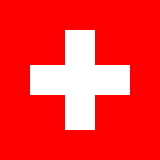Electoral system for national legislature

Switzerland
Switzerland, Constitution 2000 (last amended in 2010) [English], accessed 7 October 2019
Article 149: Composition and Election of the House of Representatives
(1) The House of Representatives is composed of 200 representatives of the People.
(2) The representatives are elected directly by the People according to the system of proportional representation. Every four years a full renewal is proceeding.
(3) Each Canton forms an election district.
(4) The seats are allocated among the Cantons in proportion to their population. Each Canton has at least one seat.
Switzerland, Federal Act on Political Rights of 17 December 1976 (as of 1 November 2015) [unofficial translation], accessed 7 October 2019
Art. 40: Initial allocation of mandates to the electoral lists.
1) The number of valid party votes for all the electoral lists is divided by a number equivalent to the number of mandates to be allocated plus one. To obtain the allocation number, the result is rounded up to the nearest whole number, unless it is already a whole number, in which case it is increased to the next highest whole number.
2) Each electoral list shall be allocated as many mandates as the number obtained by dividing the number of votes cast in favour of the list by the allocation number.
Art. 47: Procedure
1) In constituencies where only one member of the National Council is to be elected, votes may be cast for any person who is eligible for election. The person who receives the highest number of votes shall be elected. In the event of a tie, the result shall be decided by drawing lots. […]
Although the Constitution refers only to proportional representation, Art. 47 of the Federal Act on Political Rights provides that a simple majority is used for single-member constituencies. For the 2019 Federal Elections there are 6 single-member constituencies, in which a FPTP system is used.